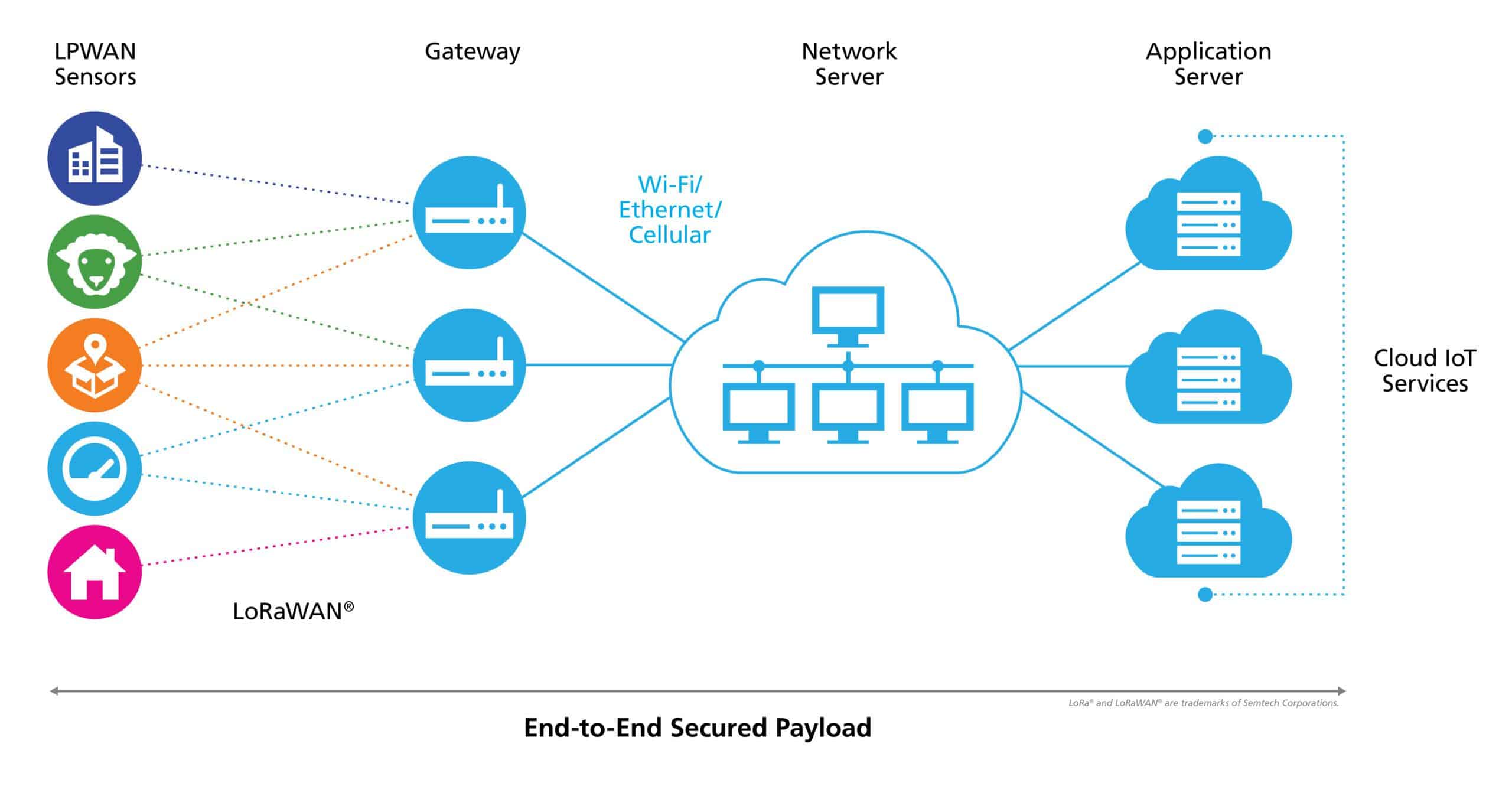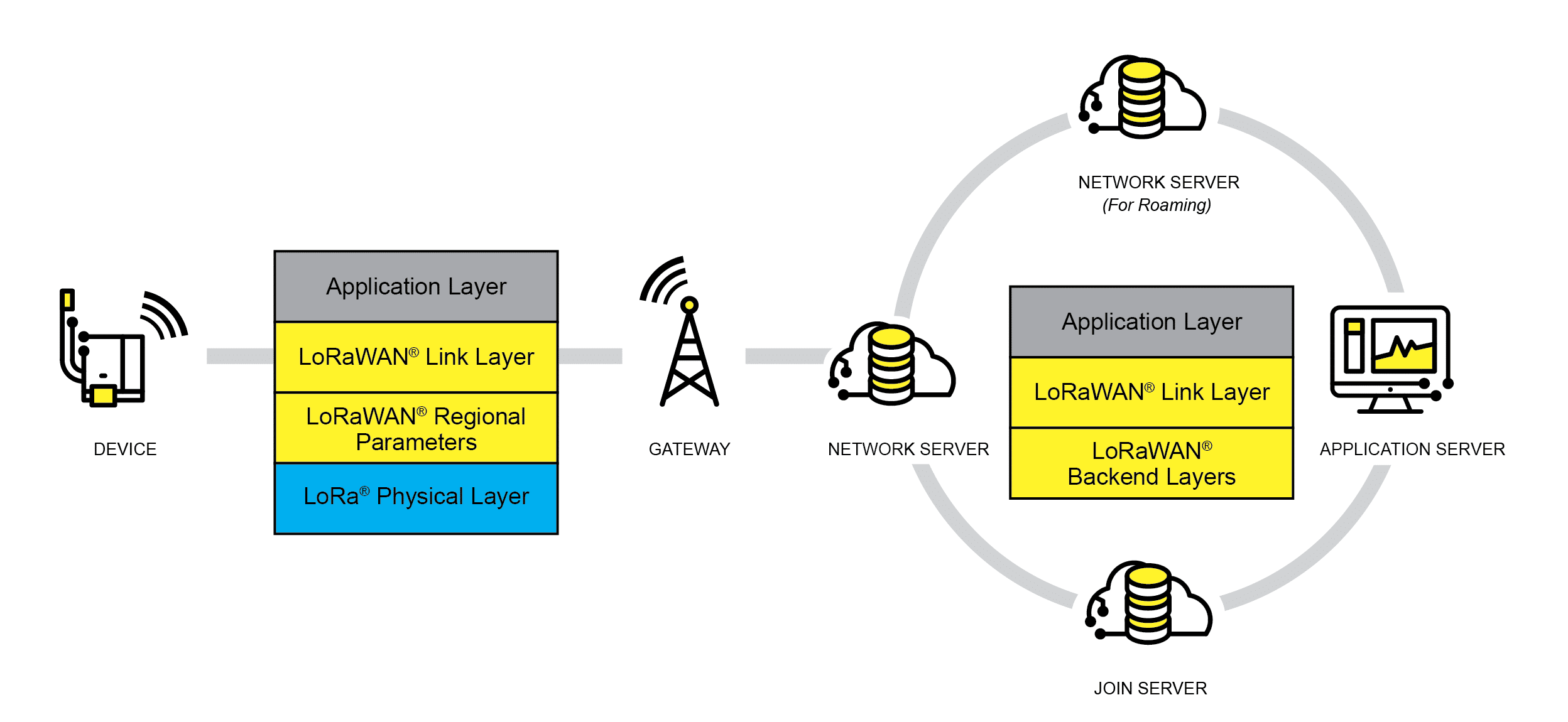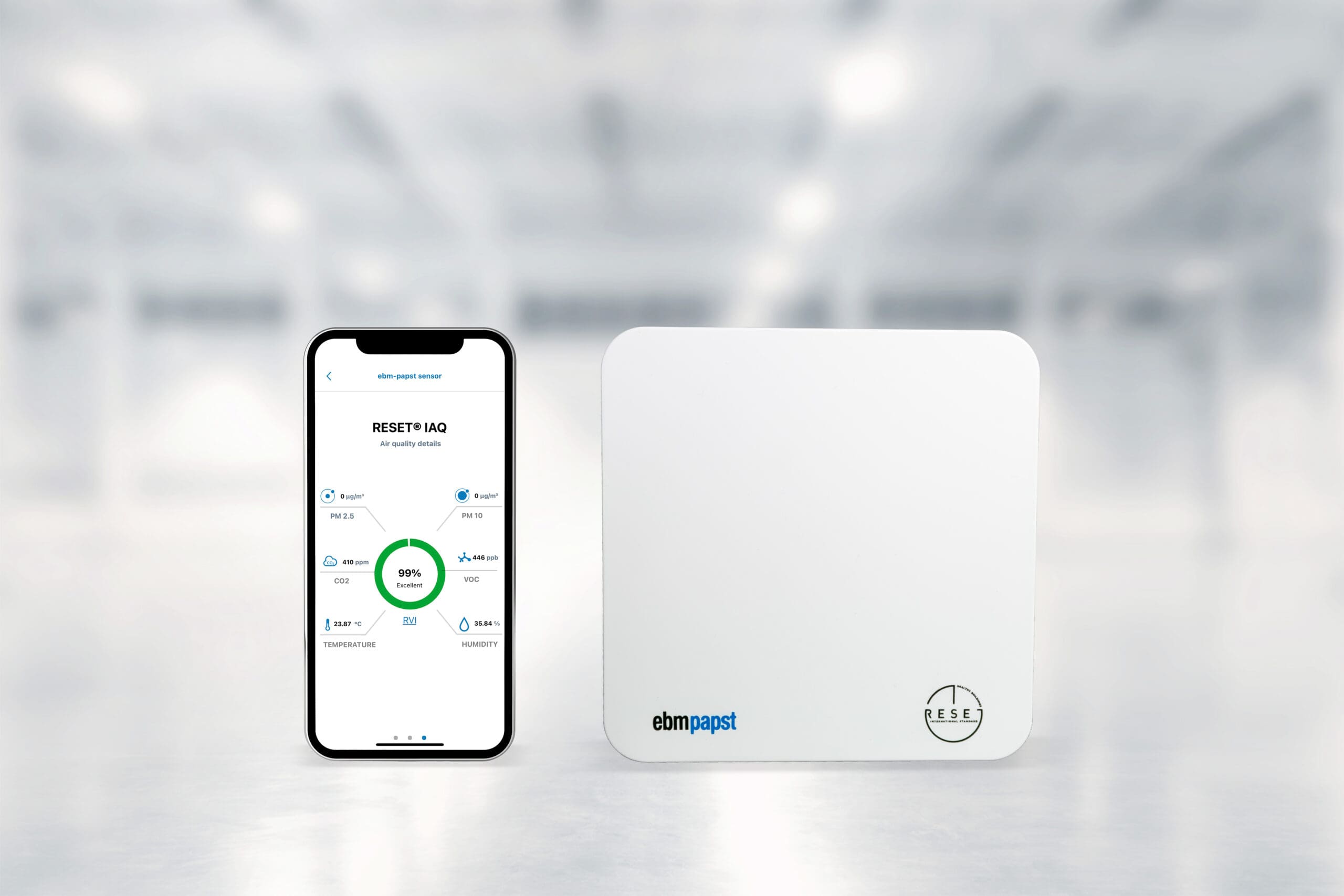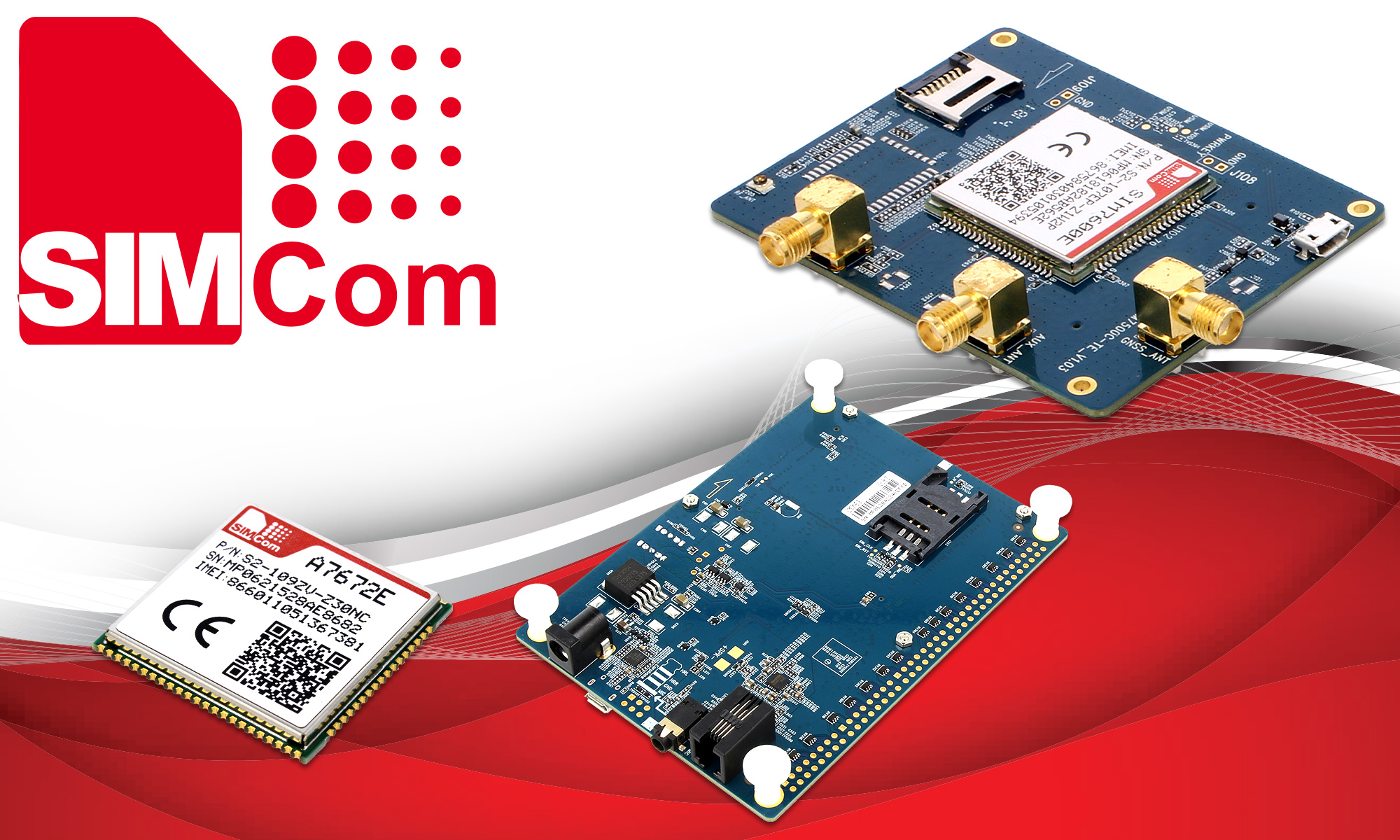Wireless connectivity is becoming a key technology in the rapidly expanding smart building industry. Millions of sensors will be connected to provide data on occupancy, air quality, temperature and many other parameters. Actuators will also need to be connected to control access to areas, open and close windows and vents, turn on pumps, etc. These activities do not require large amounts of data, but the connectivity must be reliable, cost-effective, and easy to interface with data management systems, whether on-premise or in the cloud.
These sensors and actuators can be connected in different ways. Wired connections can be simple and energy efficient, but retrofitting into existing buildings can be costly. For this reason, many system developers are looking for wireless systems.
Wi-Fi is a popular wireless technology in buildings, but it is very energy inefficient, limiting the placement of sensors/actuators where electrical power is available. Additionally, building automation sensor networks are often kept separate from corporate Wi-Fi networks for security purposes.
As a result, companies are turning to low power wide area network (LPWAN) technologies that combine the long range and low power required for smart building sensors. LPWANs allow sensors and actuators to be placed, and even replaced, in different locations as workplaces are more frequently reconfigured. This requires long-lasting battery operation, driving the need for low-power connectivity.
This low power capability is achieved through protocols specifically designed for sensor and actuator applications, rather than multimedia data transmission. Many LPWANs operate in the unlicensed frequency bands of 433MHz and 868MHz in Europe, or 902 to 928MHz in North America, as well as the unlicensed bands in Asia. These common sub-GHz bands offer manufacturers economies of scale to reduce the investment cost of wireless nodes and gateways.
Operating in the sub-GHz bands gives radio waves greater penetration through the air, but also through walls. This means that a single LPWAN gateway can support thousands of nodes in a building or a range of up to 5 km in the city or 15 km in the widest area. This has as a counterpart a lower data transmission speed, normally less than 1kbit/sg, which makes it very suitable for the low power nodes required for smart buildings.
The protocols are designed to support low-power operation of those thousands of nodes with a low duty cycle so that a node only transmits a fraction of the time. This reduces the power consumption of a node and extends battery life to several years, up to a decade. This is a key consideration for smart buildings. If there are thousands of wireless sensors in a building, replacing batteries can be a full-time job and reduce the cost savings of smarter buildings. Extending the useful life of the batteries to the replacement cycle of the sensor nodes themselves drastically reduces the operating expenses (opex) of the deployment of the technology.
The LPWAN protocols have also added encryption and authentication security to ensure that data is fully protected throughout the network.
With thousands of nodes supported by a single long-range gateway for each link, LPWANs avoid the need for more complex mesh network protocols used in technologies such as Bluetooth Low Energy (BLE). Requiring nodes to forward the data of neighbors in a mesh network puts an overhead with packet routing and increases power consumption. Instead, additional LPWAN gateways can be used to extend the network to a larger area. If scope is taken into account, an entire city can be covered with two or three gateways, which means that gateways can be added in areas where there is a higher density of nodes. This provides both efficient spectrum use and low cost deployment for the largest buildings and smart city planners.

LPWANs operating in unlicensed bands will be subject to RF noise. A quality LPWAN must be able to operate in this type of harsh environment while maintaining long battery life and long range.
An open standard LPWAN protocol, the LoRaWAN® standard, uses a modulation scheme that provides strong co-channel and adjacent channel rejection at the physical layer to protect the radio signal. Co-channel rejection with single carrier interference is 5-19 dB, depending on the spreading factor (SF), and adjacent channel rejection is 60-72 dB.
The protocol uses a spread spectrum modulation technique derived from Chirp Spread Spectrum (CSS) technology. This provides a balance between sensitivity and data rate, while operating on a fixed bandwidth channel of 125 KHz or 500 KHz (for uplink channels), and 500 KHz (for downlink channels). ).
LoRaWAN further enhances the modulation scheme by implementing an adaptive data rate (ADR) command at the MAC layer. This allows the network host to disable channels known to have strong interference to improve the overall quality of packet transmission and improve battery life.
The use of orthogonal propagation factors to implement ADR provides adaptive power for the power levels and data rates of individual end nodes. For example, an end device located close to a gateway should transmit data with a low dispersion factor, since very little link space is required. However, an end device located several kilometers from the gateway will need to transmit with a much higher dispersion factor. This higher dispersion factor provides higher processing gain, and higher receive sensitivity, although the data rate will necessarily be lower.
LoRaWAN Node
A typical node that works with the LoRaWAN standard consists of the wireless transceiver with antenna and a microcontroller. The nodes connect to a gateway, either in the building as a private network or to a public LPWAN network.
A private network gateway in a smart building would connect to a LoRaWAN server via a high-bandwidth Wi-Fi, cellular or Ethernet connection that can be separate from the corporate computer system. This could work as a completely on-premises network, or it could be cloud-based to provide a single management console across multiple buildings.
Community-built or operator-owned LPWAN networks have gateways installed in urban areas to provide network service through their own cloud servers. This means that building managers only have to add LPWAN-based sensors or actuators without worrying about the broader infrastructure.

For building managers who want greater control of their infrastructure, the cloud is vital. Cloud providers such as Amazon and Microsoft have now integrated LPWAN protocols into their systems to connect Internet of Things (IoT) devices to the cloud without the need to provision or manage servers. This can support billions of devices, trillions of messages, and can process and route those messages to cloud endpoints and other devices. This can be done reliably and securely and communicate with all nodes.
The cloud service can then connect the data with other cloud services. This enables scalable data storage, machine learning and databases to collect, process, analyze and act on the data generated by the nodes of a smart building.
Using machine learning algorithms on data from multiple buildings can provide more insight into the performance of each building and offer insight into how the building is being used and how services can be optimized. This data can also be used for predictive analytics to identify when smart building equipment starts having problems so it can be replaced before a failure disturbs building users.
LPWAN systems are a key part of the smart building infrastructure and LoRaWAN is increasingly recognized as the de facto platform for LPWAN. The long range, low power, and scalability of the protocol offer building managers a way to provide data from the sensors that form the core of systems. Different types of networks, from private and public to the cloud, provide a range of connection approaches from the thousands of nodes in a smart building to the system for making use of data. [WORDS 1344]
Author: Marc Pegulu, Vice President of IoT Product Marketing and Strategy, Sensing and Wireless Products Group, Semtech








